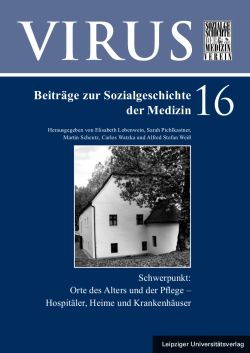
VIRUS Band 16, pp. 013-022, 2020/07/22
Schwerpunkt: Orte des Alters und der Pflege – Hospitäler, Heime und Krankenhäuser

Medical history has been fascinated by leper houses for decades. Above all, leprosaria were considered the oldest historical example of isolation for medical reasons, and – since the 1970s – following Michel Foucault and Erving Goffman were analyzed as “total institutions” by providing an ideal type of heterotopia. This interpretation, however, became insufficient, when recent research pointed out the fact that in the 16th century doctors frequently bemoaned the simulation of leprosy. Obviously, there were people suffering from poverty and homelessness who sought a life inside a leper house. The article analyzes the promise of care and shelter made by leprosaria in the Imperial City of Nuremberg in the Early Modern Period. By following some inmates originally sheltered in a hospital for the old-aged moving to other hospitals once they fell ill, the article aims at sketching out a picture of an institutionalized hospital system in early modern Nuremberg. Some of these individuals finally ended up in a leper house. On the other hand, especially female inmates of the Nuremberg leprosaria left the leper houses on their own account once they had found a spouse – and came back, if marriage failed. The Nuremberg leprosaria are therefore interpreted as being one option in a variety of offers to be sheltered and cared for in the early modern Nuremberg society.
Keywords: Hospital, leprosy, leprosarium, Nuremberg, old age, urban health care institutions, Late Medieval Times, Early Modern Times